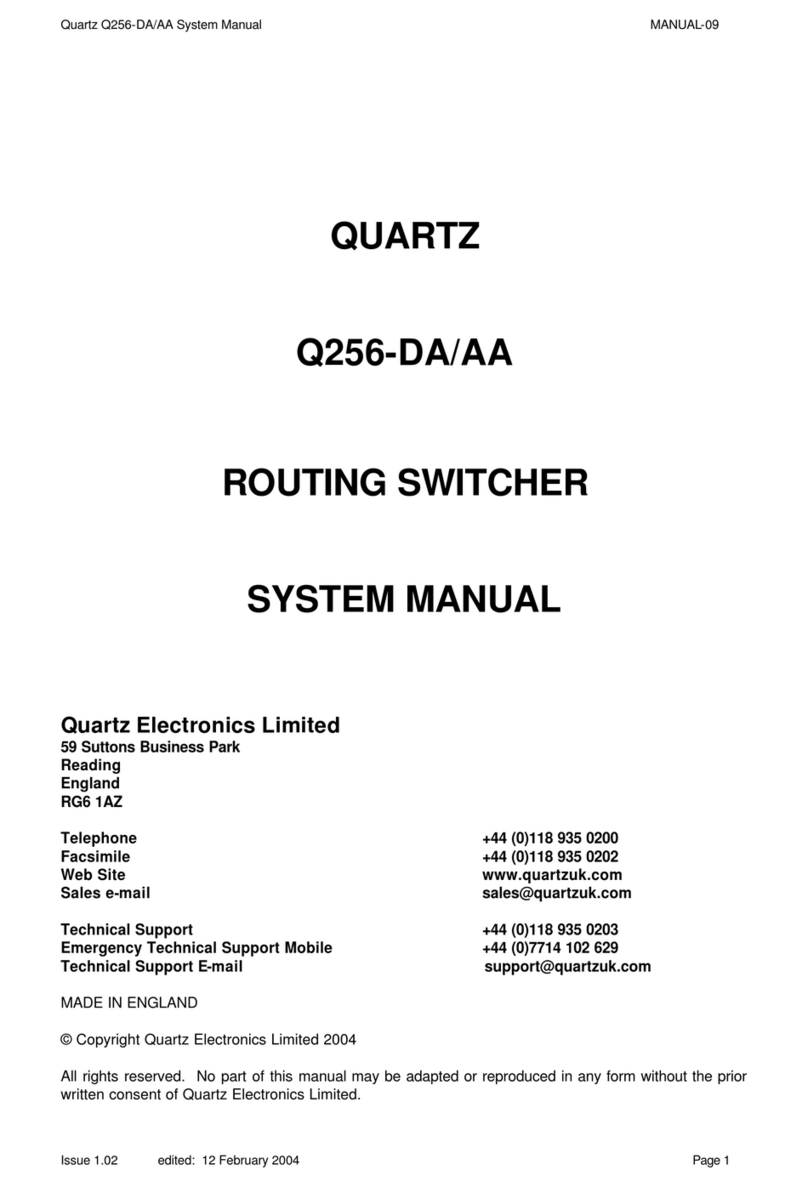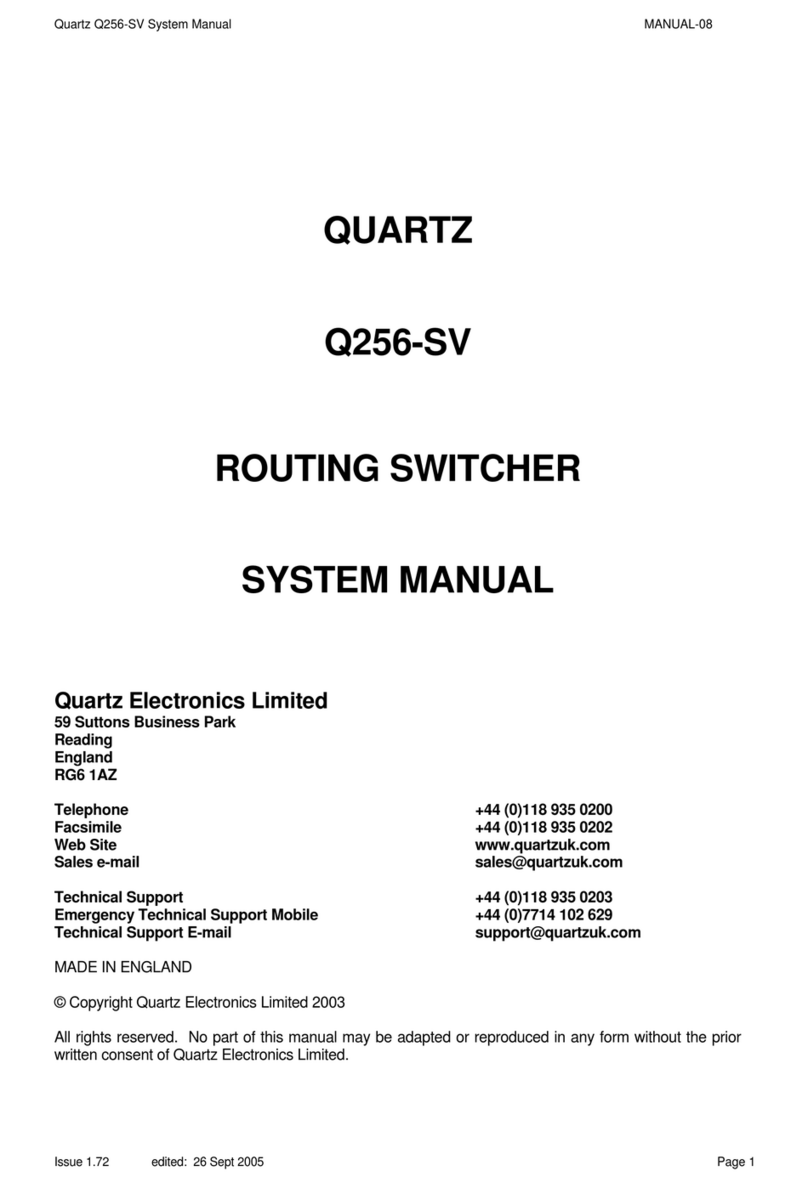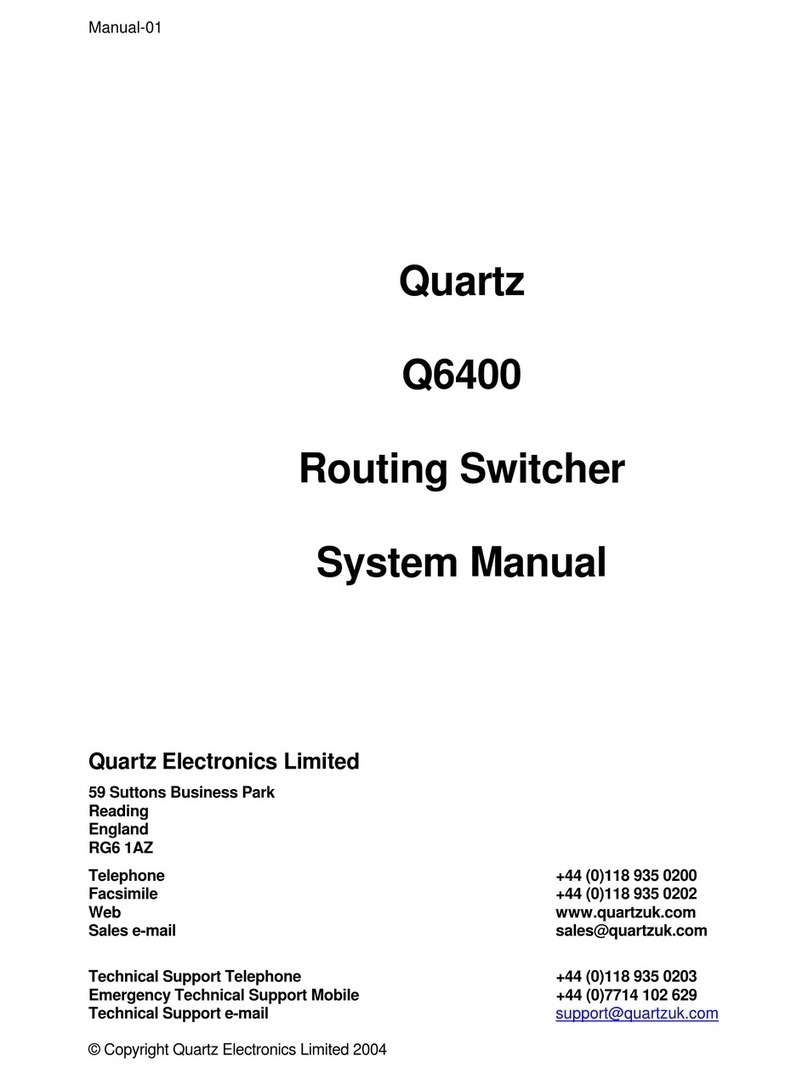
Quartz Q16/Q32 System Manual
18 May 2004 Issue 5.00 Page 5
Contents
INSTALLATION ........................................................................................................................................................6
Introduction .................................................................................................................................................................................6
Unpacking...................................................................................................................................................................................6
Physical Installation ....................................................................................................................................................................6
Electrical Connections ................................................................................................................................................................6
Video Inputs and Outputs.....................................................................................................................................................6
Video Reference...................................................................................................................................................................7
Audio Inputs and Outputs.....................................................................................................................................................8
RS422 Data Routers ............................................................................................................................................................12
Relay Routers.......................................................................................................................................................................14
Remote Control - Q-link........................................................................................................................................................16
Remote Control - RS232/422 Computer Port.......................................................................................................................18
Alarm Connector ..................................................................................................................................................................19
Power ...................................................................................................................................................................................19
Configuring The Frames .............................................................................................................................................................21
Frame Mode: Master or Slave..............................................................................................................................................21
Serial Port Mode: Diagnostics or Protocol............................................................................................................................21
Serial Port Baud Rate: Default or User ................................................................................................................................21
Force Input: Force input or use battery back settings .........................................................................................................21
Address Switch.....................................................................................................................................................................22
Buzzer ..................................................................................................................................................................................22
Analogue Video Routers ......................................................................................................................................................22
Serial Digital Video Routers .................................................................................................................................................23
Analogue Audio Routers ......................................................................................................................................................23
AES/EBU Digital Audio Routers ...........................................................................................................................................23
WinSetup ....................................................................................................................................................................................23
GENERAL DESCRIPTION .......................................................................................................................................24
Introduction .................................................................................................................................................................................24
Control System ...........................................................................................................................................................................26
Embedded Control: FU-0003 ...............................................................................................................................................27
System Controller: SC-1000.................................................................................................................................................27
Firmware Versions ...............................................................................................................................................................27
Address Switches.................................................................................................................................................................27
DIP Switches ........................................................................................................................................................................27
Status LED’s.........................................................................................................................................................................28
System Control Bus: Q-Link .................................................................................................................................................28
Serial Port.............................................................................................................................................................................29
Local Control Panel ..............................................................................................................................................................29
Serial Digital Video Routing........................................................................................................................................................29
Analogue Video Routing .............................................................................................................................................................30
Analogue Audio Routing .............................................................................................................................................................31
AES/EBU Digital Audio Routing..................................................................................................................................................33
RS422 Control Level Routing .....................................................................................................................................................34
Q32-PR- ...............................................................................................................................................................................34
Q1600-RR-1600 ...................................................................................................................................................................35
Tally Routing...............................................................................................................................................................................35
Power System.............................................................................................................................................................................35
Remote Control Panels...............................................................................................................................................................35
Technical Specification...............................................................................................................................................................37
Analog Video ........................................................................................................................................................................37
Analogue Audio ....................................................................................................................................................................38
Serial Digital Video ...............................................................................................................................................................39
AES/EBU Digital Audio.........................................................................................................................................................40
RS422 Control Level ............................................................................................................................................................41
MAINTENANCE........................................................................................................................................................42
Maintenance Philosophy.............................................................................................................................................................42
Module Removal and Replacement............................................................................................................................................42
Fault Finding ...............................................................................................................................................................................42
Some Common Faults ................................................................................................................................................................43
Further Fault Finding ..................................................................................................................................................................43
Alignment....................................................................................................................................................................................43
Routine Maintenance..................................................................................................................................................................43






























